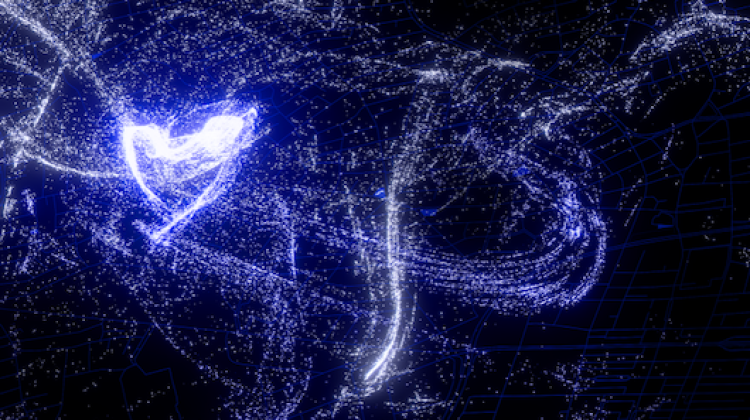Seeking to Understand and Define Cities through Data

Credit: Chada Elalami via MIT Senseable City Lab
What mental image do you conjure when you hear the term city or urban environment? Perhaps you imagine a sprawling built environment landscape such as Tokyo or Los Angeles. Maybe a planned and curated architectural style and urban design such as Paris. Or maybe an evolving and changing space such as Rio de Janeiro or Hong Kong. Similar to the different mental images that we might conjure when asked to imagine a city, what criteria and data used to define the spatial and temporal borders of a "city" vary across disciplines and researchers.
In the inaugural issue of Nature Cities, MIT researchers highlight the advantages of utilizing mobile phone data to enhance our definition of a city. In their article, "Defining a city — delineating urban areas using cell-phone data," the authors demonstrate how cellular data allows for granular mapping of population and mobility flows across space and time.
"Normative definitions and delineations of cities fail to capture the diversity of the physical configurations and social arrangements that make urban environments so vibrant and diverse in different parts of the world. We argue that we can only delineate cities if we focus on their essential particles (people), where they are and how they move," says Fabio Duarte, one of the authors of the paper.
Since MIT Senseable City proposed the use of cell phone data to show urban dynamics in real time, in their project "Real Time Rome," a more data-driven approach to urban studies gained relevance. Nature Cities, a new journal from Springer Nature, aims to expand our "understanding of the character and dynamics of cities, including their roles, impacts and influences — past, present and future. To have a Nature journal dedicated to urban issues show how a scientific investigation of urban issues has gained recognition of the broad scientific community," says Carlo Ratti, director of the Senseable City Lab.
In addition to Duarte and Ratti, contributing authors of the paper include: MIT’s Paolo Santi and Gary Hack, and Carlo Ratti; Peking University’s Lei Dong and Yu Liu; University of Pennsylvania’s Gilles Duranton; Université Paris-Saclay’s Marc Barthelemy and Vincent Verbavatz; University College London’s Michael Batty; 8University of Chicago’s Luís Bettencourt; University of California Santa Barbara’s Michael Goodchild; Université Paris’ Denise Pumain; Hong Kong Polytechnic University’s Wenzhong Shi; Santa Fe Institute’s Geoffrey West; and Hong Kong University’s Anthony Yeh.


